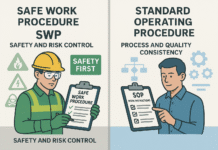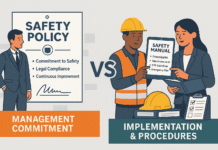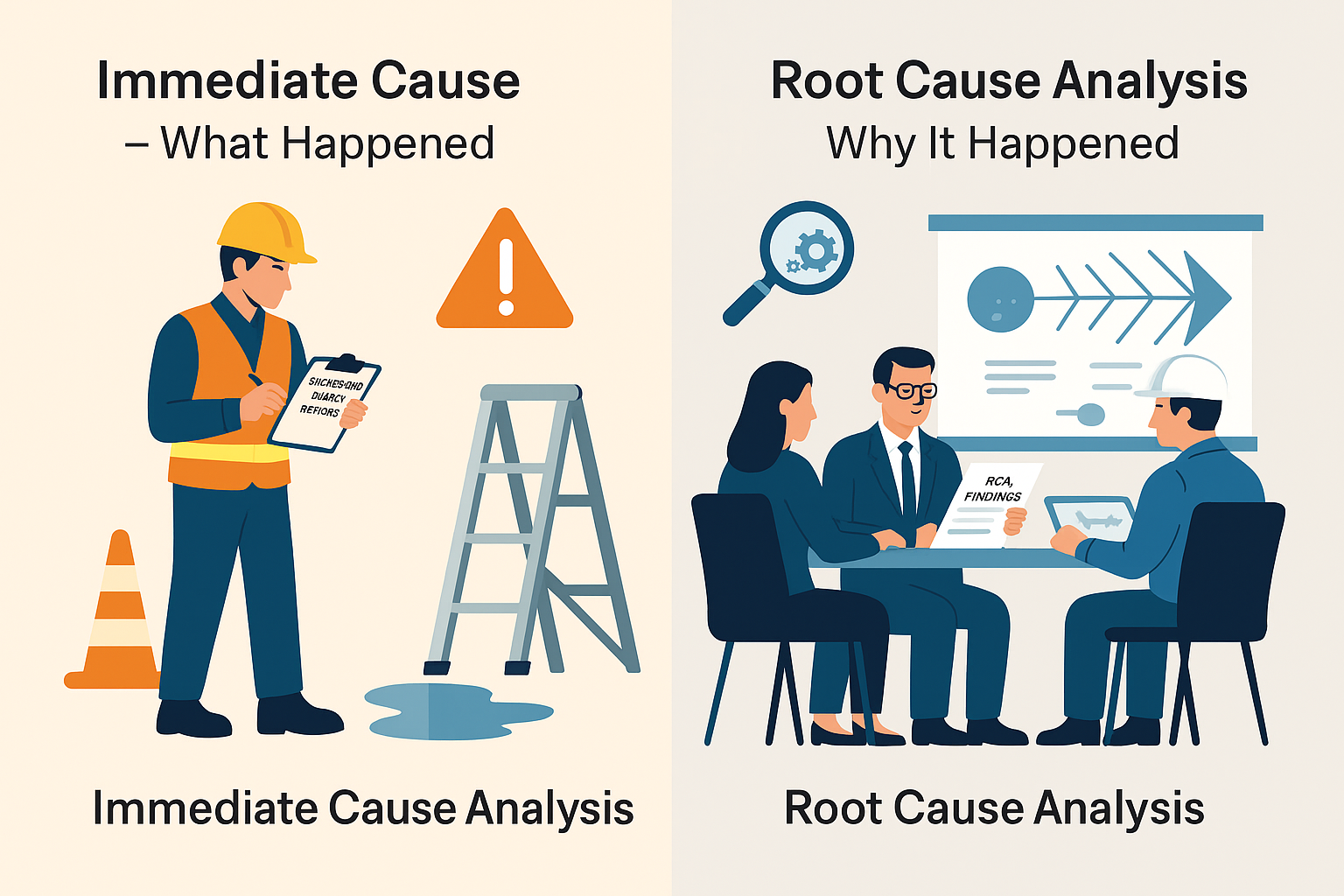
Permit-to-Work (PTW) Generator – Complete Guide for Safety Professionals
The Permit-to-Work (PTW) system is one of the most crucial safety management practices in high-risk industries. It ensures that potentially hazardous jobs such as hot work, confined space entry, working at height, or electrical work are carried out safely under controlled conditions.
Traditionally, PTWs are prepared manually on paper forms or Excel sheets. This can be time-consuming, error-prone, and difficult to standardize across projects. To solve this challenge, we’ve developed a Permit-to-Work (PTW) Generator Tool on 👉 The HSE Tools.
This digital tool allows safety professionals to create, preview, and download PTW documents in professional PDF format — saving time, ensuring compliance, and improving accuracy.
👉 Try it now: Permit-to-Work (PTW) Generator – The HSE Tools
🔹 What is a Permit-to-Work (PTW)?
A Permit-to-Work (PTW) is a formal written document that authorizes specific high-risk activities and defines the necessary safety precautions. It acts as a communication tool between management, supervisors, safety officers, and workers to ensure that hazards are controlled before the work begins.
Key objectives of PTW:
- Identify the hazards associated with the job.
- Define safe conditions under which the job can be carried out.
- Ensure proper authorization and supervision.
- Prevent simultaneous conflicting activities (e.g., welding near flammable storage).
- Document responsibilities and sign-off from all parties.
👉 Without a PTW system, unsafe work can easily lead to serious accidents, injuries, or fatalities.
🔹 Types of Permit-to-Work
Different industries and organizations classify PTWs in slightly different ways, but the most common categories include:
- Hot Work Permit – For welding, cutting, grinding, or any activity generating sparks, flames, or heat.
- Cold Work Permit – For non-hot work that still involves hazards (e.g., mechanical maintenance).
- Confined Space Entry Permit – For work in tanks, pits, silos, or areas with restricted entry and possible hazardous atmospheres.
- Electrical Work Permit – For maintenance, testing, or installation of electrical systems.
- Work at Height Permit – For scaffolding, ladder work, or any job above ground level.
- Excavation Permit – For trenching, digging, or working near underground utilities.
- Radiography Permit – For industrial radiography or X-ray activities.
- Simultaneous Operations (SIMOPS) Permit – For managing multiple high-risk jobs happening together.
🔹 Format of a Permit-to-Work
A standard PTW document usually includes:
- Job/Activity Details – Description, location, date, time.
- Hazard Identification – Hazards specific to the job.
- Precautions/Controls – Safety measures required (PPE, fire watch, gas testing, isolation, etc.).
- Authorization Section – Signatures of issuer (safety officer/engineer) and receiver (supervisor/contractor).
- Validity Period – Start and expiry of permit.
- Handback Section – Confirmation that the job is completed and the area is safe.
🔹 Permit-to-Work (PTW) Generator Tool
We’ve developed a PTW Generator Tool on 👉 The HSE Tools.
✅ Features:
- Easy online form to enter job details and hazards.
- Preloaded templates for Hot Work, Confined Space, Electrical, Excavation, Work at Height and more.
- Auto-generated checklists for precautions and PPE.
- Supervisor and worker authorization fields.
- Clear validity periods and handback section.
- Export to professional PDF format instantly.
- Works seamlessly on desktop and mobile devices.
👉 Try it here: Permit-to-Work (PTW) Generator – The HSE Tools
🔹 Example of a PTW Entry
Activity: Confined Space Tank Cleaning
- Hazards: Oxygen deficiency, toxic gases, slips/falls.
- Precautions:
- Gas test before entry
- Continuous monitoring
- Ventilation with blowers
- Rescue team on standby
- PPE: SCBA, harness, lifeline
- Issuer: Safety Officer
- Receiver: Supervisor
- Validity: 10 Sept 2025, 08:00 – 18:00 hrs
- Handback: Confirmed safe after job completion
👉 The PTW Generator produces this in professional PDF format within minutes.
🔹 Benefits of Using the PTW Generator
- Saves Time – No more manual formatting of paper permits.
- Professional Reports – Standardized PTW format across projects.
- Error-Free – Auto checklists reduce omissions.
- Audit Ready – PTWs can be shown instantly to clients or regulators.
- Improves Safety – Ensures all necessary controls are implemented.
- Mobile Access – Generate permits anytime, anywhere.
🔹 Case Studies
Case 1: Hot Work at Construction Site
Welding near fuel storage required a Hot Work PTW. Using the PTW Generator, the safety officer quickly ensured fire watch, extinguishers, and gas testing were documented. The client accepted the PTW immediately.
Case 2: Confined Space in Oil & Gas
Tank entry involved toxic gas hazards. With the Generator, gas monitoring, SCBA, and rescue plan were all documented in one click.
Case 3: Electrical Maintenance
Before isolating a switchgear, an Electrical PTW was issued through the Generator. This ensured lockout/tagout, insulated tools, and supervisor approval were clearly recorded.
🔹 Manual PTW vs. PTW Generator
| Aspect | Manual PTW (Paper/Excel) | PTW Generator Tool |
|---|---|---|
| Time Taken | 30–45 minutes | 10–15 minutes |
| Accuracy | Prone to human error | Automated checklists |
| Format | Varies site to site | Standardized PDF |
| Accessibility | Onsite only | Online, any device |
| Audit Compliance | Difficult to track | Easy to retrieve |
🔹 FAQs on PTW
Q1. Who issues the PTW?
👉 Usually the safety officer, with approval from site in-charge.
Q2. Is PTW mandatory?
👉 Yes, for all high-risk activities under OSHA, ISO 45001, and client requirements.
Q3. Can PTWs overlap?
👉 Yes, but SIMOPS (Simultaneous Operations) must be assessed carefully.
Q4. Can I download PTWs from the Generator?
👉 Yes, instant PDF download is available.
Q5. Does it meet international standards?
👉 Yes, the PTW Generator follows OSHA, ISO 45001, and ILO guidelines.
🔹 Conclusion
The Permit-to-Work system is a vital part of workplace safety. Preparing PTWs manually is slow and error-prone, but with our Permit-to-Work Generator Tool, safety professionals can create fast, accurate, and professional permits in minutes.
👉 Try the tool here: PTW Generator – The HSE Tools
🔗 External References
Job Safety Analysis (JSA) Generator – Complete Guide for Safety Professionals
HIRA Generator – Complete Guide for Safety Professionals
Monthly Safety Report Generator – Complete Guide for Safety Professionals
Weekly Safety Report Generator – Complete Guide for Safety Professionals
Daily Safety Report Generator – Complete Guide for Safety Professionals
























